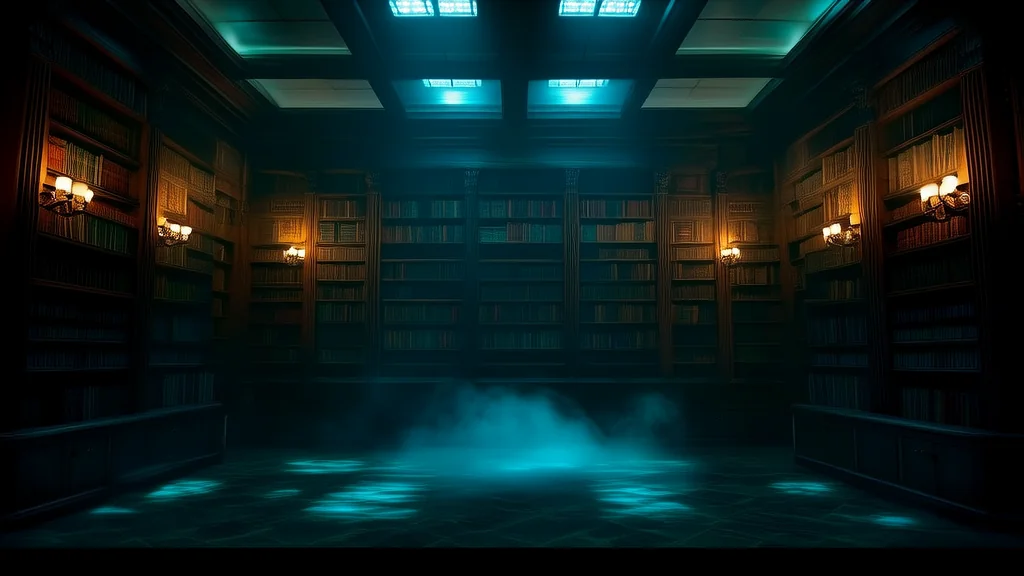🔮 Weird Tales & Urban Legends
The Mysterious Hum of Blackmoor Library at 8:17 PM

Every evening at precisely 8:17 PM, the old library in the town of Blackmoor would hum with a low, mournful sound. It was not the creak of floorboards or the whisper of wind through cracks. It was something else—something that made the air feel heavier, as if the very atmosphere had paused to listen. No one could explain it, but those who lived nearby swore they heard it, even when the library was closed.
The library had stood for over two centuries, its stone walls weathered and its windows clouded with age. It was said that the original architect, a reclusive man named Elias Varn, had designed it with an unusual purpose. He never spoke of it, and no records remained of his plans. The townsfolk believed he had built the library to house something—or someone—that should have stayed buried.
Most people ignored the humming, dismissing it as the natural settling of the building. But there were a few who paid attention. Among them was Mira, a young woman who had recently moved into the town to escape the noise of the city. She found herself drawn to the library, not for books, but for the strange pull she felt whenever she passed by. The humming would always stop when she approached, as if the building itself was aware of her presence.
One night, she decided to investigate. The library’s doors were locked, but she found an unlocked side entrance that led into the basement. The air was colder there, thick with the scent of dust and forgotten paper. She lit a flashlight and descended the spiral staircase, her footsteps echoing like a heartbeat in the silence.
At the bottom, she found a small room, its walls lined with shelves that held nothing but empty spaces. In the center stood a single chair, facing a blank wall. The humming began again, faint but unmistakable. Mira stepped closer, feeling a strange warmth on her skin, as though the air itself was alive.
She reached out and touched the wall. A chill ran up her spine, and for a moment, she saw something—flickers of images, like memories not her own. A child running through the halls, a woman weeping in the corner, a man standing alone in the dark. Then, just as quickly, the images vanished, and the humming stopped.
Mira stumbled back, her breath shallow. She didn’t know what she had seen, but she knew she had touched something real. She returned to the surface, her mind racing. That night, she couldn’t sleep. The humming came again, but this time it wasn’t just from the library. It was in her dreams, in the silence between heartbeats, in the hush of the wind outside her window.
Days passed, and the phenomenon continued. Mira began to notice other things—books that shifted on their shelves, shadows that moved when no one was there, a faint voice whispering in a language she didn’t understand. She started keeping a journal, documenting every strange occurrence. But the more she wrote, the more she realized that the library was not just haunted by the past—it was waiting for something.
One evening, she returned to the basement, determined to find answers. The door was open, as if expecting her. Inside, the air was still, the humming absent. She walked to the center of the room and sat in the chair. As she did, the wall behind her began to shimmer, like heat rising from pavement.
A figure appeared—tall, cloaked in darkness, its face obscured. It did not speak, but Mira felt its presence press against her mind, filling her with a deep, unshakable sorrow. She tried to move, but her body would not obey. The figure raised a hand, and in that instant, she understood.
The library was not a place of knowledge. It was a prison. And the humming was not a sound—it was a warning.
When she awoke, she was back in her room, the sun rising outside. The library was silent. But something had changed. The humming had stopped, and the weight in the air had lifted. Yet, in the back of her mind, she knew she had glimpsed something beyond the veil of time.
And now, the silence felt wrong.
Published on en
🔗
Related Sites
- AI Blog — AI trends and tech news